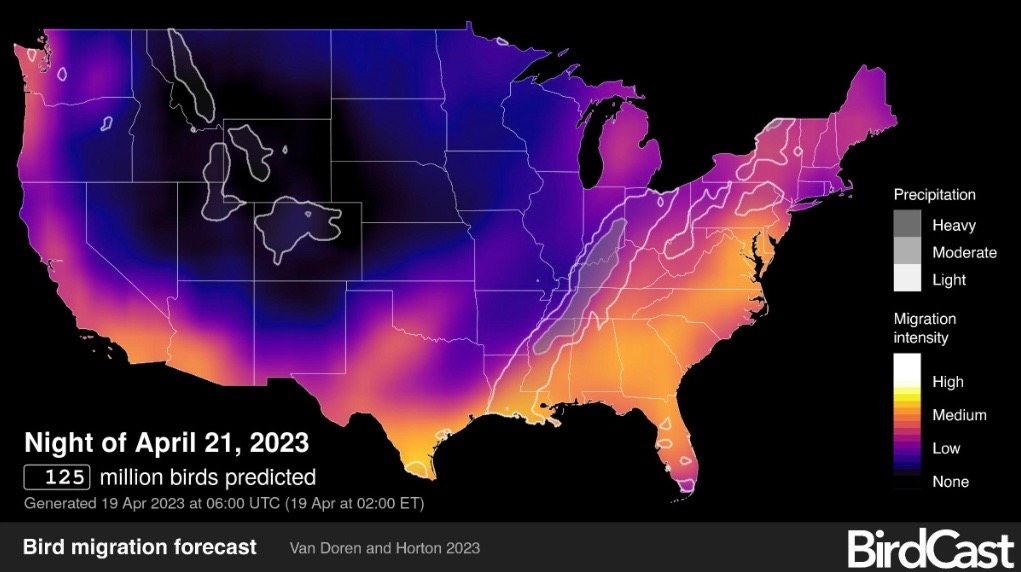Prepare yourselves, our feathered friends are on the way! Grab your binoculars and head to a natural area, preferably one with a stream or other water body – because neotropical migrant birds are making their return to the Northeast US. Neotropical migrants are birds that migrate long distances from wintering grounds in the tropics to breeding grounds in North America. They arrive in need of food and rest and often stop to rest and refuel in vegetation near water. Flying insects, food for many birds, can be twice as abundant in streamside zones.
To track their return in real-time, see maps of nocturnal bird migration as detected by US weather surveillance radar at: https://birdcast.info/migration-tools/live-migration-maps/
To see the bird migration “forecast” for the next several days check out the BirdCast: https://birdcast.info/migration-tools/migration-forecast-maps/. Bird migration forecasts show predicted nocturnal migration 3 hours after local sunset.
According to the forecast, over the next few days migration will surge into the Northeast US!

Planting native plants is one of the simplest and most important things you can do to help reduce the loss of breeding birds. If you have a stream on your property in the Catskills, contact the AWSMP office to request free assistance with restoring streamside vegetation at (845) 688-3047 or info@ashokanstreams.org.
For more ideas on how to help birds, see ‘Seven Simple Actions to Help Birds’:
